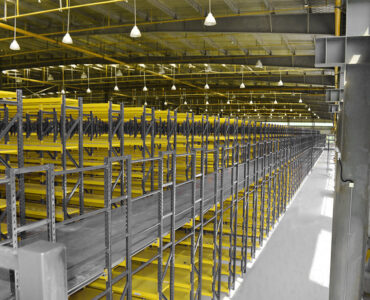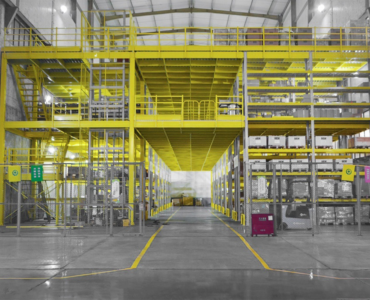-
Laminated Storage Rack
This design is based on medium and heavy-duty racks, with racks supporting the floor to divide the warehouse into 2-3 levels. The height is utilized to maximize the upper space of the warehouse, greatly increasing the storage capacity. It can be used with stackers and lifting platforms to facilitate moving goods between floors. It is suitable for situations where the warehouse has a higher ceiling, smaller goods, manual access, and a large storage volume.
Features
-
Floor design customized according to customer needs, fully assembled structure, no welding required, easy to relocate.
-
Suitable for high warehouses with smaller goods, manual access, and large storage volume.
-
Uses galvanized steel floorboards with strong load-bearing capacity, high precision, and a smooth surface.
-
Floors are available in flat plates, patterned steel plates, and perforated steel plates to meet various fire prevention, ventilation, and lighting requirements.
-
Floor load-bearing capacity ranges from 300KG to 1000KG per square meter, ensuring high operational safety.
-
-
Laminated Platform
All beams and floors are independently researched, designed, and patented by our company. We are the first in the industry to adopt modular flexible assembly processes. All structures undergo steel structure finite element analysis using ANSYS software. The beam and floor cross-section designs are more reasonable, and under the same load-bearing conditions, the modular laminated beams and floors are lighter in weight (the combinations can be adjusted according to load requirements to meet different load needs). Compared to traditional methods, this approach offers greater savings.
Features
-
The open-door structure is easy to fabricate and requires ample space during use to facilitate door opening.
-
The columns and bases are made of special structural materials suitable for high columns and heavy loads, with a high safety factor.
-
The design is reasonable, with lighter beam and floor weight under the same load-bearing conditions.
-
Floor load-bearing capacity should consider whether hydraulic carts are used, rather than carts with harder wheels or smaller flatbed carts.
-
Combinations can be adjusted based on load requirements to meet different load needs.
-

